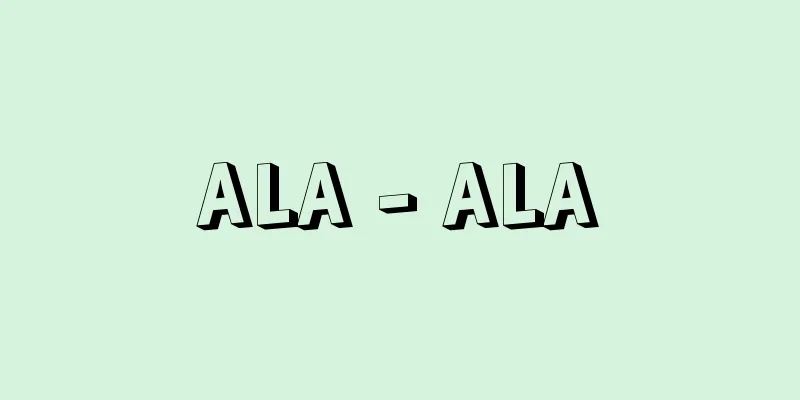Kawaraban - Kawaraban

|
During the Edo period, a publication was issued as a single woodblock print (sometimes as a booklet of two or three pages) to provide breaking news. The term kawaraban began to be used at the end of the Edo period, and before that it was called yomiuri, ezoshi, ichiisuzuri, etc. There is a theory that in some cases text and pictures were carved into a clay block and then burned to create the original plate, but this is unclear. The oldest kawaraban is said to have been one reporting the Summer Siege of Osaka (1615), but this is not clear. Documents show that yomiuri about the Great Fire of Edo and the Yaoya Oshichi Incident were all the rage during the Tenna period (1681-1684), and it is said that ezoshi about double suicides were published one after another in Kamigata during the Jokyo and Genroku periods (1684-1704). This was the beginning of the popularity of kawaraban. The Edo Shogunate, wary of the increasing flow of information, suppressed these publications, and it became impossible to publish woodblock prints about double suicides and arson cases. In the mid-Edo period, many woodblock prints appeared about disasters, such as the Great Edo Fire of 1772 (Meiwa 9) and the Great Asama Eruption of 1783 (Tenmei 3), and some reported on destruction, but after the Kansei Reforms (1787-1793), restrictions became stricter. However, after the Bunsei era (1818-1830), many types of woodblock prints about fires, earthquakes, and vendettas were sold in defiance of the ban, and lists of rice prices, illustrations of festival processions, and illustrations of Ryukyu envoy processions were also published. More than 300 types of woodblock prints of the Ansei earthquake (1855) were in circulation, and afterwards, woodblock prints reporting on political events leading up to the Meiji Restoration and social satire continued to appear. The price of a woodblock print was 3-6 mon for a single sheet of paper, and 16-30 mon for a booklet. The authors and publishers were likely picture-paper makers, woodblock print makers, incense makers, etc. At the time of the Ansei earthquake, authors such as Kanagaki Robun and Kasatei Senka, as well as nishikie printmakers, were also involved in production and sales. In the Meiji era, woodblock prints were replaced by modern newspapers, but they can be said to have played a pioneering role. [Yozo Imada] "Hideo Ono, Kawaraban Monogatari (1960, Yuzankaku Publishing)" "Yozo Imada, Disaster Information in Edo (included in Research on Edo Townspeople, Vol. 5, edited by Matsunosuke Nishiyama, 1978, Yoshikawa Kobunkan)" [Reference item] |The incident occurred in Kannazuki, and Ebisu, the caretaker of the house, was holding the head of the giant catfish, the source of the crime, with a gourd in order to capture it and take it to Izumo. ( Owned by the National Diet Library ) A tile print of the Ansei Great Earthquake (catfish painting) Source: Shogakukan Encyclopedia Nipponica About Encyclopedia Nipponica Information | Legend |
|
江戸時代に、ニュース速報のため、木版一枚摺(ずり)(ときには2、3枚の冊子)にして発行された出版物。瓦版という名称は幕末に使われ始め、それ以前は、読売(よみうり)、絵草紙(えぞうし)、一枚摺などとよばれた。土版に文章と絵を彫り、焼いて原版とした例もあったという説もあるが不明確である。最古の瓦版は大坂夏の陣を報じたもの(1615)といわれるが明確ではない。天和(てんな)年間(1681~1684)に、江戸の大火、八百屋(やおや)お七事件の読売が大流行したと文献にみえ、貞享(じょうきょう)・元禄(げんろく)年間(1684~1704)には上方(かみがた)で心中事件の絵草紙が続出したと伝えられる。これが瓦版流行の始まりである。 江戸幕府は、情報流通の活発化を警戒してこれらを禁圧し、心中や放火事件などの瓦版は出せなくなった。江戸時代中期には、1772年(明和9)の江戸大火、1783年(天明3)の浅間山大噴火など災害瓦版が多く現れ、打毀(うちこわし)を報じたものもあったが、寛政(かんせい)の改革(1787~1793)以後、取締りがいっそう厳しくなった。しかし、文政(ぶんせい)年間(1818~1830)以後になると、大火、地震、仇討(あだうち)などの瓦版が、禁令に抗して幾種類も売られ、また、米相場一覧、祭礼行列図、琉球(りゅうきゅう)使節行列図なども刊行された。安政(あんせい)の地震(1855)の瓦版は300種以上も出回り、その後、明治維新に至る政治的事件の報道、社会風刺の瓦版が続出した。瓦版の値段は、半紙一枚摺で3~6文、冊子型は16~30文ほどであった。作者、発行者は絵草紙屋、板木屋、香具師(やし)などであろう。安政の地震の際には、仮名垣魯文(かながきろぶん)、笠亭仙果(りゅうていせんか)などの作者や錦絵(にしきえ)板元が製作販売にあたってもいる。 明治に入って瓦版は近代新聞にとってかわられるが、その先駆的役割を果たしたといえよう。 [今田洋三] 『小野秀雄著『かわら版物語』(1960・雄山閣出版)』▽『今田洋三著『江戸の災害情報』(西山松之助編『江戸町人の研究 第5巻』所収・1978・吉川弘文館)』 [参照項目] |神無月に起こったため、留守居役のえびすが、元凶の大鯰をとらえて出雲へ連行すべく、瓢箪で頭を押さえている国立国会図書館所蔵"> 安政の大地震の瓦版(鯰絵) 出典 小学館 日本大百科全書(ニッポニカ)日本大百科全書(ニッポニカ)について 情報 | 凡例 |
<<: Oriental greenfinch (Oriental greenfinch)
Recommend
Utsushie Toraku - Utsushie Toraku
...Utsue (transparent pictures) suffered the same...
Obama [town] - Obama
An old town in the western part of the Shimabara P...
Bronze Man (English spelling)
In Chinese medicine, two bronze human models with ...
qan
…also called khan or khan (kan). Originally a tit...
Piles, R.de (English spelling) PilesRde
...From this time onwards, the "trend toward...
Pinnate compound leaves
A type of plant leaf shape. Leaflets are arranged ...
Wei Qing
A general in the reign of Emperor Wu of the Forme...
Chiasma - Chiasma (English spelling)
During the prophase of meiosis, two paired chromo...
The Wheel-Turning King
(Translation of Cakravarti-rāja) Buddhist term. A ...
Air caisson
...The caisson method, which uses caissons to bui...
Wesontio - Wesontio
…It is off the main railway and motorway routes, ...
Gilman, GF (English spelling) GilmanGF
…Headquarters: Montvale, New Jersey. Founded in 1...
Himalayan snowbell (English name) Bergenia stracheyi
A perennial plant of the Saxifragaceae family, nat...
International politics
When we look at the relationship between nations ...
《Kissaben》 - Kissaben
…Kashin brought about a breakthrough in the world...









